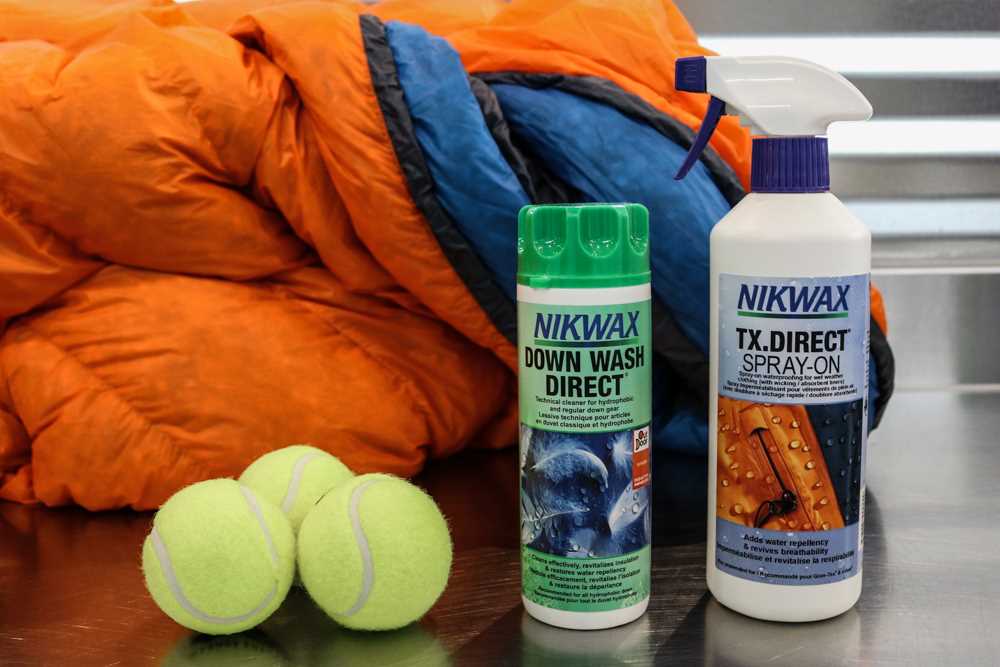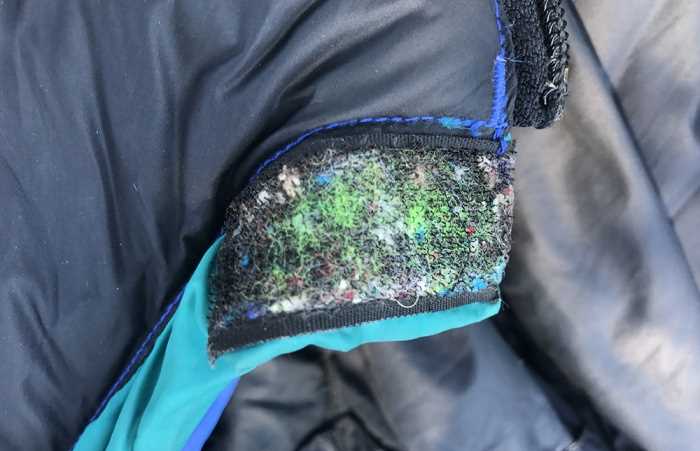




Having a clean and fresh sleeping bag is essential for a comfortable outdoor experience. Whether you’ve been camping, hiking, or simply enjoying a weekend getaway, your sleeping bag will inevitably get dirty and require washing. However, washing a sleeping bag can be a daunting task if you’re not familiar with the proper techniques. In this expert guide, we’ll provide you with effective tips and techniques to ensure that your sleeping bag is clean and ready for your next adventure.
First and foremost, it is important to check the care instructions provided by the manufacturer. Different sleeping bags require different washing methods, and it’s crucial to follow the specific instructions to avoid damaging the bag’s insulation or fabric. If the care label is missing or unclear, it’s best to err on the side of caution and choose a gentle cleaning method.
One of the most common and recommended methods for washing a sleeping bag is to use a front-loading washing machine. Before loading the bag into the machine, zip it up completely and fasten any straps or Velcro closures. To prevent any damage to the bag or the machine, it is advisable to wash it on a gentle cycle with cold water. Additionally, use a mild detergent that is specifically designed for washing synthetic or down-filled gear. Avoid using bleach or fabric softeners as they can damage the bag’s material or reduce its insulation capabilities.
After the wash cycle is complete, it’s important to thoroughly rinse the sleeping bag to remove any residue of detergent. This can be achieved by running the bag through an additional rinse cycle or by hand rinsing it in a bathtub or large sink. Once the rinsing is complete, carefully squeeze out excess water without twisting or wringing the bag. Avoid using a dryer to dry your sleeping bag as the heat can damage the insulation. Instead, lay it flat or hang it up in a well-ventilated area to air dry. It may take several hours or even a couple of days for the bag to dry completely, but it’s crucial to ensure that it is completely dry before storing it to prevent the growth of mold or mildew.
Remember, keeping your sleeping bag clean and properly maintained will not only extend its lifespan but also ensure a comfortable and hygienic sleeping experience during your outdoor adventures. By following these effective tips and techniques, you can confidently wash your sleeping bag and have it ready for your next excursion.
Effective Tips for Washing a Sleeping Bag

Properly washing your sleeping bag is essential for maintaining its quality and prolonging its lifespan. Follow these tips to ensure that your sleeping bag stays clean and cozy for your next adventure:
1. Read the care instructions
Before washing your sleeping bag, carefully read the care instructions provided by the manufacturer. Different sleeping bags may have specific requirements and recommendations for washing that you’ll want to follow.
2. Spot clean when possible
If there are only a few small stains on your sleeping bag, try spot cleaning them first. Use a mild detergent and a soft cloth or sponge to gently scrub the stained area. Rinse thoroughly and allow it to air dry.
3. Use a front-loading washing machine
If your sleeping bag is machine washable, use a front-loading washing machine rather than a top-loading one. Top-loading machines with agitators can be too rough on the delicate fibers of the sleeping bag.
4. Use a gentle cycle and cold water

When using a washing machine, choose a gentle cycle and use cold water. Harsh agitation or hot water can damage the insulation and other materials of the sleeping bag.
5. Use a mild detergent
Use a mild, non-detergent soap or a specifically designed sleeping bag cleaner. Avoid using bleach or fabric softener, as these can also cause damage to the materials.
6. Rinse thoroughly
After washing, make sure to rinse your sleeping bag thoroughly to remove all traces of detergent. Leftover soap residue can affect the performance of the insulation.
7. Air dry
Never put your sleeping bag in a dryer. Instead, hang it up or lay it flat to air dry. Ensure it is fully dry before storing it to prevent mold and mildew growth.
8. Use a sleeping bag liner
To minimize the need for frequent washing, consider using a sleeping bag liner. Liners are easier to clean and can help prevent dirt and oils from getting directly on your sleeping bag.
9. Store properly
When not in use, store your sleeping bag in a cool, dry place. Avoid compressing it for long periods, as this can damage the insulation.
By following these tips, you can keep your sleeping bag clean and fresh, ensuring a comfortable sleep on your next outdoor adventure.
Why You Should Clean Your Sleeping Bag Regularly
Sleeping bags are an essential piece of equipment for camping and outdoor adventures. They provide us with warmth and comfort during the night, helping us to get a good night’s sleep. However, over time, sleeping bags can become dirty and unhygienic if they are not cleaned regularly. Here are some reasons why you should clean your sleeping bag regularly:
1. Hygiene
When you go camping, your sleeping bag can accumulate dirt, sweat, and body oils. These substances can create the perfect breeding ground for bacteria and other microorganisms. Regular cleaning of your sleeping bag ensures that these harmful substances are removed, reducing the risk of infections and allergies.
2. Odor Control
Regular cleaning of your sleeping bag helps to prevent unpleasant odors from building up. The accumulation of sweat, body oils, and other substances can create a stale smell that can be difficult to get rid of. By cleaning your sleeping bag regularly, you can keep it fresh and odor-free.
3. Prolongs Lifespan

Cleaning your sleeping bag regularly can help to prolong its lifespan. Dirt, sweat, and body oils can cause the fabric of your sleeping bag to degrade over time. By cleaning your sleeping bag, you can remove these substances and prevent the fabric from becoming worn out or damaged, ensuring that your sleeping bag lasts for many years.
4. Maintains Insulation
Over time, dirt and debris can accumulate in the insulation of your sleeping bag, reducing its ability to provide warmth. Regular cleaning helps to remove these contaminants and maintain the insulation properties of your sleeping bag, ensuring that you stay warm and comfortable during cold nights.
5. Improves Performance
A clean sleeping bag performs better than a dirty one. Dirt and oils can make the fabric less breathable, reducing its ability to wick away moisture and regulate temperature. By cleaning your sleeping bag regularly, you can ensure that it performs optimally, allowing you to get a comfortable night’s sleep.
In conclusion, cleaning your sleeping bag regularly is essential for maintaining its hygiene, preventing odors, prolonging its lifespan, maintaining insulation, and improving its performance. By following proper cleaning techniques and taking care of your sleeping bag, you can ensure that it remains in excellent condition for many years of camping adventures.
Choosing the Right Detergent for your Sleeping Bag
Cleaning a sleeping bag may seem like a simple task, but choosing the right detergent is crucial to ensure the longevity and performance of your sleeping bag. Using the wrong detergent can damage the fabric, reduce insulation, and even affect the water repellency. Here are some tips on how to choose the right detergent for your sleeping bag:
Consider the fabric of your sleeping bag
The first step in choosing the right detergent is to consider the fabric of your sleeping bag. Different fabrics require different cleaning methods and detergents. Most sleeping bags are made of synthetic materials such as nylon or polyester, while some are made of down or a combination of down and synthetic materials. Read the care label or manufacturer’s instructions to determine the fabric of your sleeping bag.
Opt for a mild detergent

When it comes to cleaning sleeping bags, it is best to choose a mild detergent that is specifically formulated for outdoor gear or delicate fabrics. Avoid using strong detergents or those that contain bleach, fabric softeners, or optical brighteners, as these can damage the fabric and reduce the performance of your sleeping bag.
Consider using a specialty detergent
If your sleeping bag is down-filled, you may want to consider using a specialty detergent that is designed for down products. These detergents are formulated to clean down-filled items without stripping the natural oils or affecting the loft. They help maintain the fluffiness and insulation properties of down-filled sleeping bags.
Check for environmental friendliness

If you are environmentally conscious, you may want to choose a detergent that is biodegradable and eco-friendly. Look for detergents that are labeled as “environmentally friendly” or “biodegradable” to minimize your impact on the environment.
Follow the manufacturer’s instructions
Lastly, it is important to read and follow the manufacturer’s instructions for washing your sleeping bag. Some sleeping bags may have specific requirements or recommendations for cleaning. Follow the instructions carefully to ensure the best results and avoid any potential damage to your sleeping bag.
By choosing the right detergent for your sleeping bag, you can effectively clean and maintain its performance for years to come. Remember to always read the care label and follow the manufacturer’s instructions for the best results.
Machine Washing vs Hand Washing
When it comes to washing a sleeping bag, you have two main options: machine washing or hand washing. Each method has its own pros and cons, so it’s important to understand the differences before deciding which one to use.
Machine Washing
Machine washing your sleeping bag can be convenient, especially if you have a large capacity washing machine. Here are some advantages of machine washing:
- Efficiency: Machine washing allows you to clean your sleeping bag quickly and easily. You can simply toss it in the machine and let it do the work for you.
- Thorough cleaning: Washing machines agitate the sleeping bag, helping to remove dirt, grime, and odors effectively.
- Time-saving: Instead of spending hours washing your sleeping bag by hand, machine washing can save you time and effort.
However, there are also some drawbacks to machine washing:
- Potential for damage: Agitating movements in the washing machine can cause the sleeping bag’s insulation to clump or tear, decreasing its effectiveness.
- Extra care needed: You may need to use a front-loading washing machine or a large capacity top-loading machine to ensure there is enough space for the sleeping bag to move freely.
- Drying challenges: After machine washing, drying your sleeping bag properly can be a challenge. It may take a long time and require special care to avoid damaging the insulation.
Hand Washing
If you prefer a more hands-on approach, hand washing your sleeping bag may be a better option. Here are some advantages of hand washing:
- Control: Hand washing allows you to have more control over the washing process, ensuring that you can gently clean the sleeping bag without causing damage.
- Lower risk of damage: Since you are manually washing the sleeping bag, the risk of damage is lower compared to using a washing machine.
- Spot-cleaning: Hand washing makes it easier to target specific areas that need extra cleaning or stain removal.
However, hand washing also has its downsides:
- Time-consuming: Washing a large sleeping bag by hand can be time-consuming, especially if you are dealing with stubborn stains or odors.
- Limited agitation: Compared to a washing machine, hand washing may not be able to provide the same level of agitation to effectively remove dirt and grime.
- Drying challenges: Similar to machine washing, drying a sleeping bag after hand washing can be a challenge, and it may take a long time to ensure all moisture is removed.
Whichever method you choose, it’s important to follow the manufacturer’s instructions and guidelines for washing your specific sleeping bag. This will help ensure that you clean it properly without causing any damage or compromising its performance.
Proper Drying Techniques for Sleeping Bags
Drying your sleeping bag properly is essential to maintain its quality and prolong its lifespan. Here are some effective techniques to ensure your sleeping bag is dry and ready for your next camping trip:
1. Air Drying
The best and most recommended way to dry a sleeping bag is by air drying. Find a well-ventilated area such as a clothesline, balcony, or backyard where you can hang your sleeping bag. Make sure to choose a spot away from direct sunlight or intense heat.
Lay your sleeping bag flat or hang it by its loops, if available, to maximize airflow and allow it to dry evenly. Turn the sleeping bag periodically to ensure all areas are exposed to fresh air.
2. Tumble Drying with No Heat
If air drying is not possible or you are in a hurry, you can use a tumble dryer with no heat setting. Place your sleeping bag inside the dryer along with a few clean tennis balls or dryer balls. The balls will help fluff up the insulation and prevent clumping.
Set the dryer to a low or no heat setting and run a gentle cycle. Check the sleeping bag every 10 minutes to ensure it doesn’t overheat. It may take some time, but this method is safe and effective for drying your sleeping bag.
3. Avoid Direct Sunlight and Heat Sources
Avoid drying your sleeping bag directly under the sun or near intense heat sources such as radiators or fireplaces. Excessive heat can damage the fabric and insulation of your sleeping bag.
If you need to dry your sleeping bag indoors, choose a well-ventilated room and keep it away from direct heat sources. Good air circulation is essential for proper drying.
4. Shake and Fluff

Once your sleeping bag is completely dry, give it a good shake to fluff up the insulation. This will help restore its loft and ensure even distribution of insulation throughout the bag.
If necessary, use your hands or a soft brush to gently fluff up the insulation in the hood and footbox area.
5. Store in a Loose Storage Bag
After drying, store your sleeping bag in a loose storage bag or hang it in a dry place. Avoid compressing your sleeping bag for extended periods, as this can degrade the insulation and reduce its loft.
Allow your sleeping bag to breathe by keeping it in a well-ventilated area. This will help prevent any odors or mildew buildup.
By following these proper drying techniques, you can ensure that your sleeping bag remains clean, fresh, and in excellent condition for your next outdoor adventure.
Storing Your Sleeping Bag After Washing
Properly storing your sleeping bag after washing is essential for maintaining its quality and ensuring it lasts for many camping season. Here are some tips on how to store your sleeping bag:
1. Air drying
Before storing your sleeping bag, make sure it is completely dry. Hang it outdoors or in a well-ventilated area to allow air to circulate and dry the bag thoroughly. Avoid direct sunlight as it can fade the fabric.
2. Folding or stuffing
There are two common methods for storing a sleeping bag: folding and stuffing.
- Folding: Fold the sleeping bag in half lengthwise and then fold it in thirds or quarters, depending on the size. This method is preferred for down sleeping bags as it helps maintain their loft.
- Stuffing: Stuff the sleeping bag into its stuff sack or a larger storage sack. This method is more convenient and suitable for synthetic sleeping bags.
3. Avoid tight compression
Avoid compressing your sleeping bag too tightly, as it can damage the insulation and reduce its loft. Leave some room in the storage sack to allow the sleeping bag to expand and retain its loft over time.
4. Store in a dry and cool place
Choose a dry and cool place to store your sleeping bag. Avoid storing it in a damp basement or attic, as moisture can lead to mildew or mold growth. Ideally, store it in a closet or a dry storage area.
5. Use a storage sack or pillowcase
If you don’t have the original storage sack, you can use a large pillowcase or a breathable storage sack. Avoid storing it in plastic bags as they trap moisture and can damage the fabric and insulation.
6. Avoid hanging for long periods

Avoid hanging your sleeping bag for extended periods as it can cause fabric stress and deform the insulation. Hanging it for short periods to air it out is fine, but for long-term storage, it’s better to use the folding or stuffing methods mentioned above.
By following these tips, you can properly store your sleeping bag after washing and ensure it stays clean and ready for your next outdoor adventure. Taking care of your sleeping bag will not only prolong its lifespan but also ensure you have a comfortable and cozy sleeping experience on your future camping trips.
FAQ
Can I wash my sleeping bag in a top-loading washing machine?
It is possible to wash a sleeping bag in a top-loading washing machine, but it is not recommended. Top-loading machines can agitate the sleeping bag too vigorously, causing damage to the insulation or fabric. If you only have a top-loading machine available, it is best to wash the sleeping bag by hand in a bathtub or large sink.
What should I do if my sleeping bag has stains?
If your sleeping bag has stains, you can try spot cleaning them before washing the entire bag. Mix a small amount of mild detergent with water to create a cleaning solution. Gently scrub the stained area with a sponge or soft brush. Rinse thoroughly and allow the area to dry before proceeding with washing the entire sleeping bag.
How often should I wash my sleeping bag?
The frequency of washing a sleeping bag depends on how often it is used and the conditions it is exposed to. As a general guideline, it is recommended to wash a sleeping bag once or twice a year if it is used regularly. However, if the sleeping bag becomes visibly dirty or develops an odor, it should be washed as soon as possible.
Can I use fabric softener when washing my sleeping bag?
No, it is not recommended to use fabric softener when washing a sleeping bag. Fabric softeners can leave a residue on the sleeping bag, which can reduce its insulation properties and make it less effective at retaining heat. It is best to stick to a mild detergent specifically designed for outdoor gear when washing a sleeping bag.











